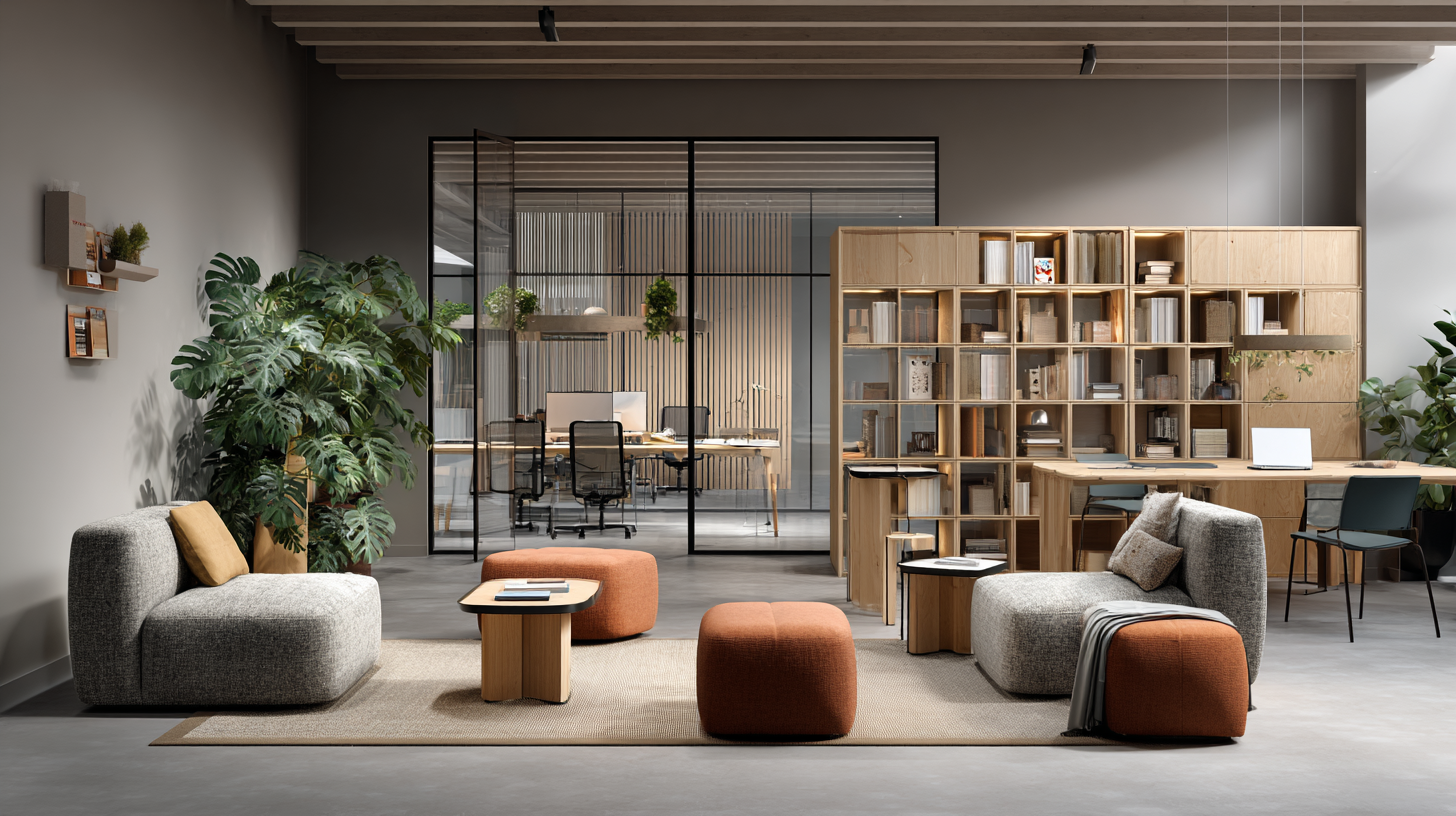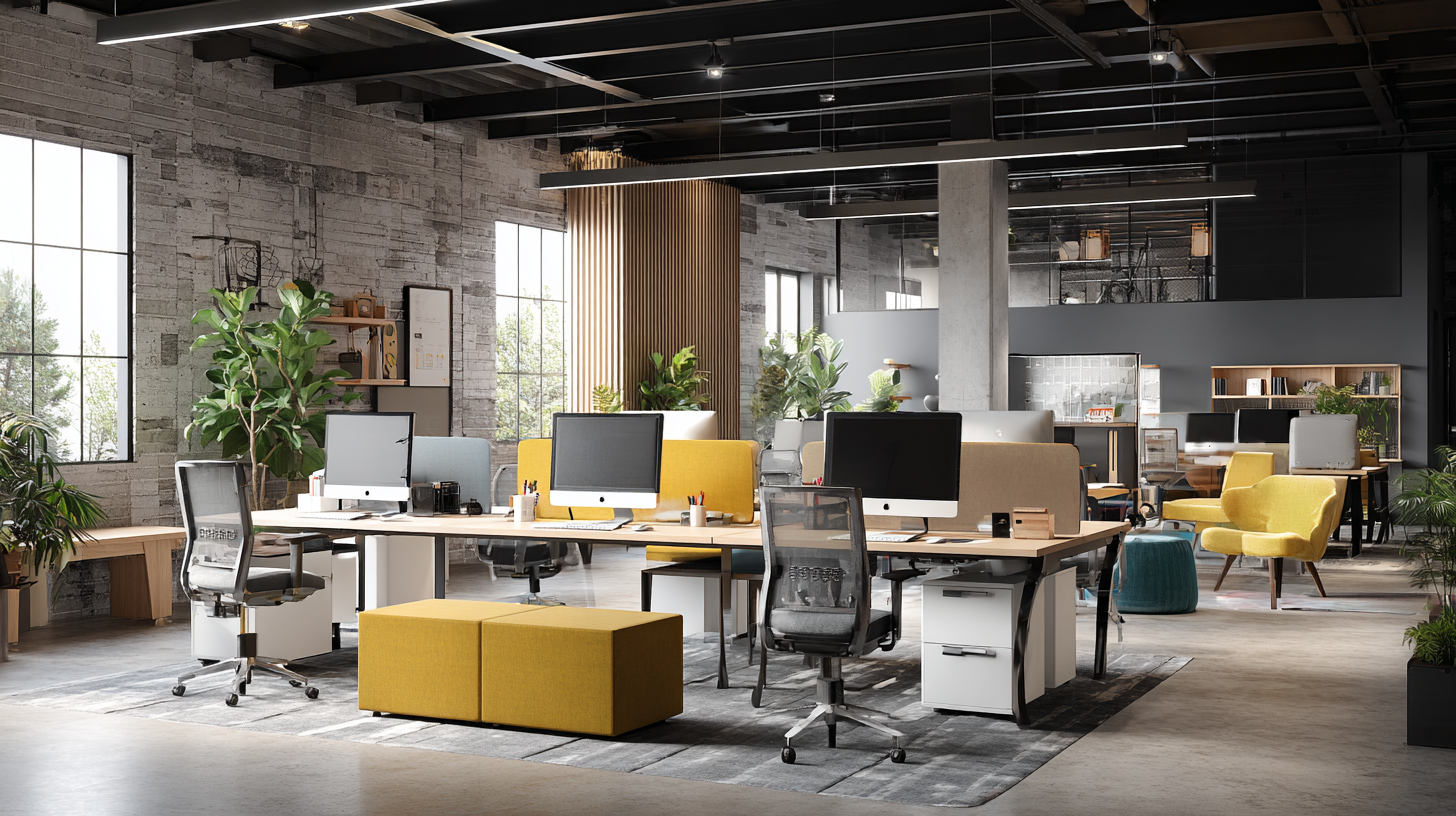Exploring Unique Alternatives in Office Furniture: A Global Buyer’s Guide
In today's dynamic work environment, the demand for innovative and functional office furniture has surged, with the global office furniture market projected to reach USD 650 billion by 2025, according to a report by Mordor Intelligence. As businesses recognize the impact of well-designed workspaces on employee productivity and satisfaction, office furniture stores are adapting to provide a plethora of unique alternatives that cater to diverse aesthetics and ergonomic needs.

Innovative Office Furniture Trends Shaping the Market by 2025
The office furniture market is poised for transformative growth as we approach 2025, driven by innovative design and evolving workplace dynamics. Recent studies predict that the global office furniture market will reach approximately $65 billion by 2025, with a compound annual growth rate (CAGR) of 4.8%. This growth is largely influenced by the shift towards remote and hybrid work models, prompting businesses to re-evaluate their spatial needs and invest in adaptable furniture solutions.
One of the most notable trends is the increasing demand for ergonomic furniture, which aims to enhance comfort and productivity. Research by the American Chiropractic Association indicates that nearly 80% of Americans will experience back pain at some point in their lives, underscoring the importance of ergonomic designs in the workplace. Furthermore, sustainable materials are becoming a key focus, with a report from Grand View Research stating that the eco-friendly office furniture segment is expected to grow at a CAGR of 5.1%. As organizations seek to create healthier and more environmentally conscious workplaces, the integration of biophilic design elements and recycled materials will undoubtedly shape the future of office furniture.
Sustainable Design: Eco-Friendly Materials and Their Impact
When it comes to office furniture, sustainability has emerged as a key factor that modern buyers should consider. Eco-friendly materials not only minimize environmental impact but also contribute to healthier indoor spaces.
Bamboo, reclaimed wood, and recycled metals are leading the charge in sustainable office furniture design. Bamboo, for instance, grows rapidly and absorbs more carbon dioxide than traditional hardwoods, making it an excellent choice that balances aesthetics with environmental stewardship.
Another vital aspect of sustainable office furniture is the use of non-toxic finishes and adhesives. Many manufacturers are now turning to organic, water-based paints and glues that reduce harmful emissions and VOCs (volatile organic compounds) in office environments. This shift not only promotes better air quality but also aligns with the growing demand for green certifications, appealing to companies that prioritize sustainability in their branding.
Choosing furniture made from such eco-conscious materials is an investment in both the planet and the well-being of employees, fostering a workplace that reflects a commitment to environmental responsibility.
Ergonomics in the Workplace: Balancing Comfort and Functionality
Creating a workspace that prioritizes ergonomics is essential for maintaining employee health and productivity. According to a report by the Global Workplace Analytics, companies that invest in ergonomic office furniture see a return of $2 to $3 for every dollar spent due to decreased worker compensation claims, lower absenteeism, and increased productivity. Ergonomic chairs, sit-stand desks, and adjustable monitors are key elements that not only enhance comfort but also encourage better posture and reduce the risk of musculoskeletal disorders.
Tips for implementing ergonomic solutions include assessing each employee's individual needs and preferences. Incorporate adjustable features in desks and chairs to accommodate varying body types. Consider providing employees with ergonomic assessments to understand their specific requirements better. Additionally, encourage regular breaks to alleviate pressure and promote circulation – studies suggest that even short, frequent breaks can significantly boost overall well-being.
When selecting office furniture, preference should go to designs that blend comfort with functionality. Opting for chairs with lumbar support and desks that can transition between sitting and standing positions creates a flexible work environment. It's vital to foster a workspace where comfort and productivity go hand in hand, ensuring employees can thrive throughout their working hours.
Global Perspectives: Cultural Influences on Office Furniture Design
Cultural influences play a pivotal role in shaping office furniture design across the globe. In Scandinavian countries, for example, the ethos of "hygge" emphasizes comfort and simplicity, resulting in furniture that is not only aesthetically pleasing but also functional. Light woods and soft fabrics are commonly used to create inviting workspaces that promote well-being and creativity. This approach reinforces the idea that a peaceful work environment can enhance productivity, reflecting a culture that values balance between work and personal life.
In contrast, Asian countries often incorporate elements of tradition and natural materials into their office furniture designs. Japanese designs favor minimalism and modularity, blending seamlessly with the concept of Feng Shui to encourage harmonious energy flow within the workspace. On the other hand, Indian office designs may integrate vibrant colors and intricate patterns, showcasing the rich cultural heritage while fostering a colorful work atmosphere. These diverse approaches highlight how cultural heritage and environmental context can significantly influence office furniture trends worldwide, offering unique alternatives for businesses looking to establish a distinct office identity.

Case Studies: Successful Implementations of Unique Office Furniture Solutions
In recent years, the demand for unique office furniture solutions has surged, driven by the need for flexible, collaborative, and creative work environments. Case studies from major corporations highlight the impact of innovative furniture designs on employee satisfaction and productivity. For instance, a report by the Global Workspace survey indicated that 95% of employees believe that the right office furniture can enhance their work experience. Companies such as WeWork have successfully implemented
 modular furniture that encourages teamwork and adaptability, reflecting a shift towards more dynamic workspace layouts.
modular furniture that encourages teamwork and adaptability, reflecting a shift towards more dynamic workspace layouts.
Furthermore, organizations are increasingly investing in bespoke solutions, with a rise of approximately 30% in customized furniture orders noted by the Office Furniture Dealers Association in their latest research. One notable example is Adobe, which transformed its office with customizable workstations and lounge areas that promote both individual work and collaboration. This approach not only improved the overall aesthetics of the workspace but also fostered a sense of community among employees, leading to a reported 20% increase in creative project output. These case studies showcase how unique office furniture can not only redefine the physical workspace but also influence the overall corporate culture.
